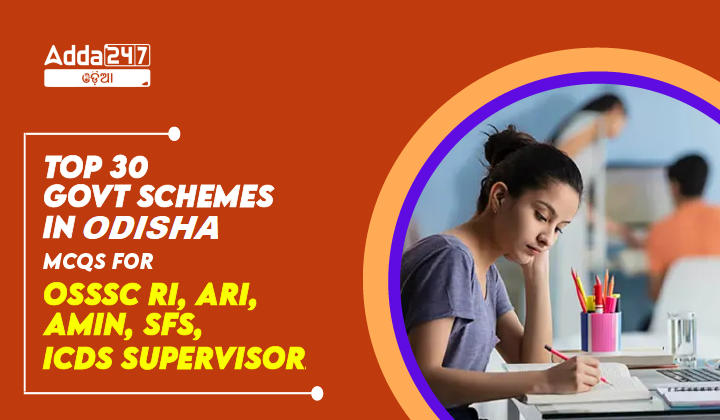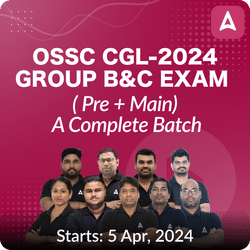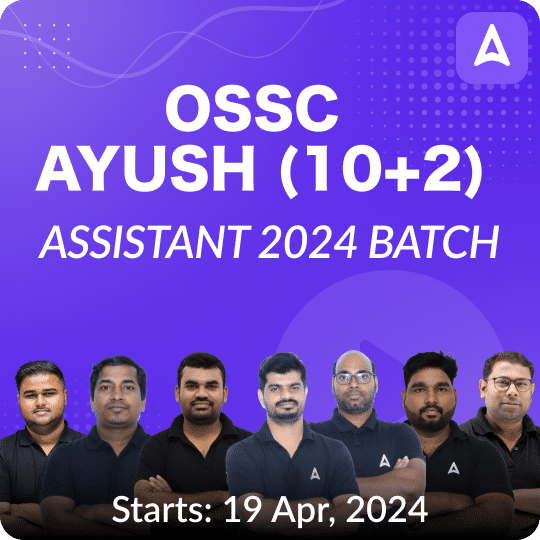To prepare for the OSSSC RI, ARI, Amin, SFS, and ICDS Supervisor exams, it’s crucial to familiarize yourself with the top government schemes in India aimed at socio-economic development. These schemes cover various sectors such as agriculture, health, education, employment, and social welfare. Some of the prominent schemes include the Pradhan Mantri Jan Dhan Yojana (PMJDY) aimed at financial inclusion, the Mahatma Gandhi National Rural Employment Guarantee Act (MGNREGA) providing employment opportunities in rural areas, and the Pradhan Mantri Awas Yojana (PMAY) for affordable housing. Additionally, schemes like the Swachh Bharat Mission, Beti Bachao Beti Padhao, and Ayushman Bharat aim to promote cleanliness, gender equality, and healthcare accessibility, respectively.
Top 30 Government Schemes MCQS For OSSSC RI,ARI, Amin, SFS, ICDS Supervisor
- In which Indian state was the Swayam Yojana launched?
A) Bihar
B) Odisha
C) Uttar Pradesh
D) Rajasthan
Answer: B) Odisha - What is the age range of beneficiaries eligible for loans under the Swayam Yojana?
A) 16-30
B) 18-35
C) 20-40
D) 25-45
Answer: B) 18-35 - What type of loans does the Swayam Yojana offer to young entrepreneurs?
A) Interest-based loans
B) Collateral-based loans
C) Interest-free loans
D) Business development loans
Answer: C) Interest-free loans - How much financial support is provided to families with ration cards under the Swayam Yojana?
A) Rs. 500
B) Rs. 750
C) Rs. 1,000
D) Rs. 1,500
Answer: C) Rs. 1,000 - What is the total amount allocated for running the Swayam Yojana for two years?
A) Rs. 300 crore
B) Rs. 400 crore
C) Rs. 448 crore
D) Rs. 500 crore
Answer: C) Rs. 448 crore - What is the primary objective of the Swayam Yojana?
A) Providing employment opportunities
B) Offering interest-free loans to entrepreneurs
C) Supporting education for youth
D) Enhancing healthcare services
Answer: B) Offering interest-free loans to entrepreneurs - How many young people from rural areas can avail assistance under the Swayam Yojana?
A) 50,000
B) 75,000
C) 1 lakh
D) 1.5 lakh
Answer: C) 1 lakh - When was the Swayam Yojana officially launched?
A) 12th February 2022
B) 12th February 2023
C) 12th February 2024
D) 12th February 2025
Answer: C) 12th February 2024 - What is the total estimated cost of the Swayam Yojana to assist the people of Odisha?
A) Rs. 500 crore
B) Rs. 700 crore
C) Rs. 1,000 crore
D) Rs. 1,237.74 crore
Answer: D) Rs. 1,237.74 crore - What is the primary objective of the KHUSI+ scheme recently expanded by the government in Odisha?
A) To provide free sanitary napkins to all women in the state
B) To distribute belted sanitary napkins for institutional deliveries and medical termination of pregnancy
C) To promote awareness about menstrual hygiene among adolescent girls only
D) To improve access to healthcare facilities for pregnant women
Answer: B) To distribute belted sanitary napkins for institutional deliveries and medical termination of pregnancy - What is the main aim of expanding the KHUSI scheme to KHUSI+ in Odisha?
A) To reduce maternal mortality and morbidity rates
B) To increase government funding for healthcare facilities
C) To provide employment opportunities for women
D) To improve access to education for girls
Answer: A) To reduce maternal mortality and morbidity rates - According to the National Family Health Survey 5, what percentage of women in Odisha are reported to be using hygienic menstrual protection?
A) 70%
B) 75%
C) 81.5%
D) 90%
Answer: C) 81.5% - In which Indian state was the KHUSI scheme launched?
A) Rajasthan
B) Odisha
C) Kerala
D) Uttar Pradesh
Answer: B) Odisha - What does PM-KISAN stand for?
A) Prime Minister’s Krishi Sankalp Nidhi
B) Pradhan Mantri Kisan Samriddhi Nidhi
C) Pradhan Mantri Kisan Samman Nidhi
D) Prime Minister’s Kisan Suraksha Nidhi
Answer: C) Pradhan Mantri Kisan Samman Nidhi - When was the PM-KISAN scheme launched?
A) 24th February 2018
B) 24th February 2019
C) 24th February 2020
D) 24th February 2021
Answer: B) 24th February 2019 - How is the financial benefit distributed to farmers under the PM-KISAN scheme?
A) Through cash distribution
B) Through cheque distribution
C) Through Direct Benefit Transfer (DBT) mode
D) Through crop insurance
Answer: C) Through Direct Benefit Transfer (DBT) mode - In which Indian state was the ‘AMA BHOOMI’ initiative launched?
A) Odisha
B) Maharashtra
C) Tamil Nadu
D) Karnataka
Answer: A) Odisha - What is the primary objective of the ‘AMA BHOOMI’ initiative?
A) To promote agriculture in urban areas
B) To improve transportation infrastructure
C) To create and maintain open spaces for urban well-being
D) To provide affordable housing for low-income families
Answer: C) To create and maintain open spaces for urban well-being - What does the ‘AMA BHOOMI’ initiative focus on to mitigate urban challenges?
A) Building skyscrapers
B) Expanding industrial zones
C) Creating and maintaining open spaces
D) Increasing traffic congestion
Answer: C) Creating and maintaining open spaces - How many types of open spaces are identified under the ‘AMA BHOOMI’ initiative?
A) 3
B) 4
C) 5
D) 6
Answer: C) 5 - In which Indian state was the Biju Swasthya Kalyan Yojana (BSKY) Nabin Card introduced?
A) Maharashtra
B) Odisha
C) Uttar Pradesh
D) Tamil Nadu
Answer: B) Odisha - What is the full form of BSKY in the context of the scheme introduced in Odisha?
A) Biju Swasthya Kisan Yojana
B) Biju Swasthya Kalyan Yojana
C) Bharat Swasthya Kalyan Yojana
D) Bharat Swasthya Krishi Yojana
Answer: B) Biju Swasthya Kalyan Yojana - Who is eligible to receive the BSKY Nabin Card in rural areas according to the scheme?
A) Only government employees
B) Only income taxpayers
C) All villagers, except government employees and income taxpayers
D) Only villagers below the poverty line
Answer: C) All villagers, except government employees and income taxpayers - What percentage of the population in Odisha receives cashless medical benefits under the BSKY scheme?
A) 50%
B) 60%
C) 70%
D) 80%
Answer: D) 80% - How much financial assistance do women receive for medical expenses under the BSKY Nabin Card scheme?
A) Up to Rs. 2 lakh
B) Up to Rs. 5 lakh
C) Up to Rs. 8 lakh
D) Up to Rs. 10 lakh
Answer: D) Up to Rs. 10 lakh - In which Indian state did the Transport department launch the Automated Driving Testing System (ADTS)?
A) Maharashtra
B) Odisha
C) Uttar Pradesh
D) Tamil Nadu
Answer: B) Odisha - Who developed the software for the Automated Driving Testing System (ADTS) implemented in Odisha?
A) Odisha State Government
B) Ministry of Road Transport and Highways (MoRTH)
C) National Informatics Centre (NIC)
D) Indian Institute of Technology (IIT)
Answer: B) Ministry of Road Transport and Highways (MoRTH) - Which state government has launched the Nano Unicorn Scheme?
A) Karnataka
B) Odisha
C) Maharashtra
D) Tamil Nadu
Answer: B) Odisha - What is the primary objective of the Nano Unicorn Scheme?
A) Promoting large-scale industries in urban areas
B) Fostering entrepreneurship and reducing unemployment in rural areas
C) Providing financial assistance to existing microenterprises
D) Supporting educational institutions in rural regions
Answer: B) Fostering entrepreneurship and reducing unemployment in rural areas - How many mini-sized businesses (nano unicorns) does the Nano Unicorn Scheme aim to support by 2025-26?
A) 800
B) 1,000
C) 1,200
D) 1,500
Answer: C) 1,200 - How much fund has been allocated by the state government for the Nano Unicorn Scheme?
A) Rs 5.23 crore
B) Rs 8.99 crore
C) Rs 11.75 crore
D) Rs 13.56 crore
Answer: D) Rs 13.56 crore - What is the size category of businesses targeted under the Nano Unicorn Scheme?
A) Large-scale businesses
B) Medium-sized businesses
C) Micro-sized businesses
D) Mini-sized businesses
Answer: D) Mini-sized businesses





